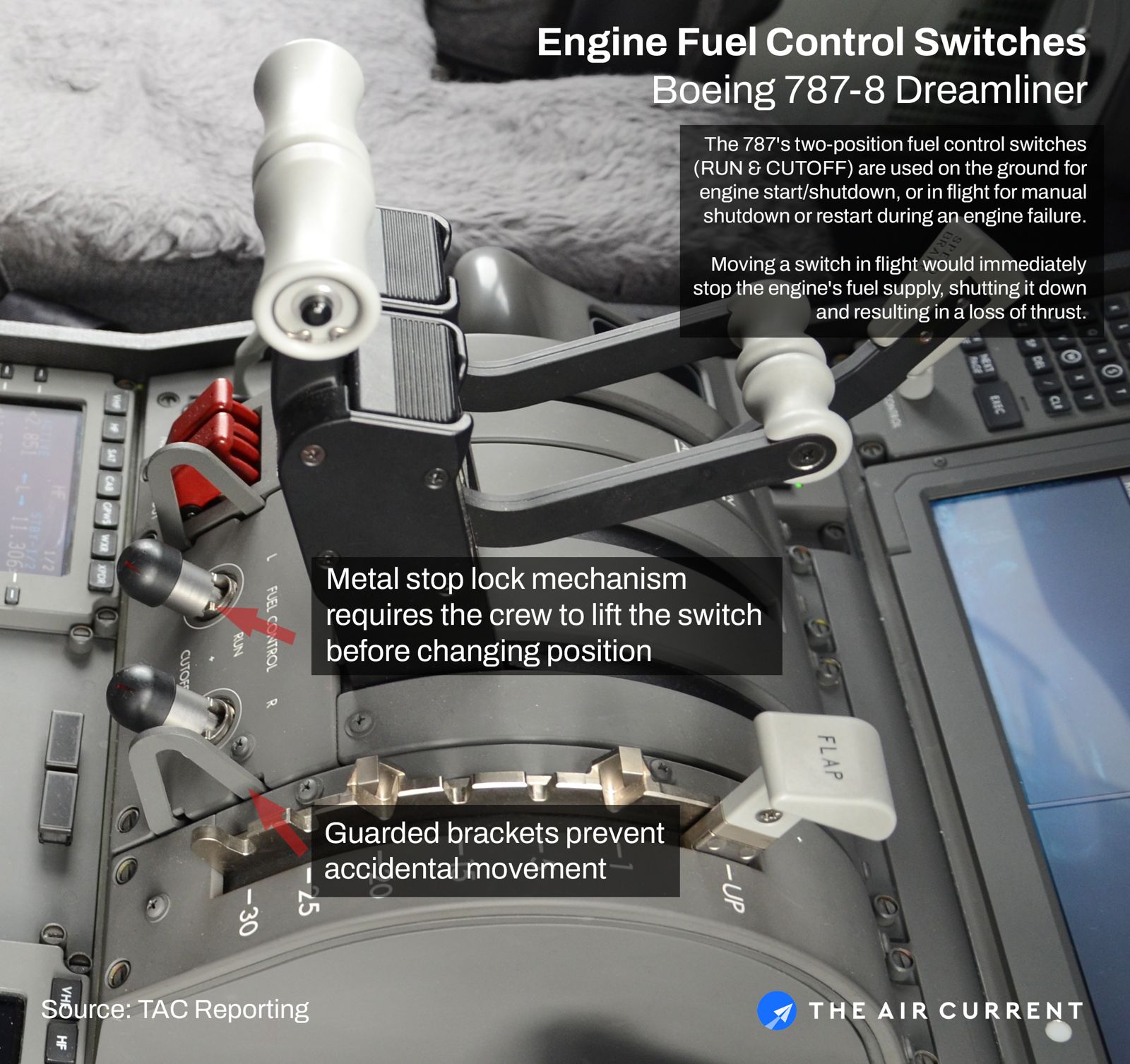
Investigators Probe Cockpit Actions in Fatal Air India 787 Crash
In the aftermath of the tragic Air India Flight 171 crash, which claimed the lives of 241 passengers and crew and 19 people on the ground, investigators have begun to focus on a critical area of cockpit operation — the engine fuel control switches on the Boeing 787 Dreamliner. This heartbreaking incident, which occurred just 32 seconds after takeoff from Ahmedabad on June 12, 2025, is the first fatal accident involving the Dreamliner, a modern widebody aircraft known for its advanced systems and automation.
Data retrieved from the flight’s black boxes — both the cockpit voice recorder and the flight data recorder — is directing attention to the possibility that the fuel control switches for one or both of the jet’s engines were moved at a critical moment after liftoff. These switches, located below the throttle levers in the cockpit, control the flow of fuel to the engines. In flight, they are typically left untouched unless an emergency engine shutdown is needed. If switched from RUN to CUTOFF, the fuel supply is halted, shutting down the associated engine instantly — along with power generated from that engine, which feeds many aircraft systems.
Also Read:- Grok’s Dangerous Turn: Elon Musk’s AI Under Fire for Antisemitic and Offensive Rhetoric
- Rain Halts Yankees-Mariners Showdown as Judge and Raleigh Go Hitless
What's unclear at this stage is whether those switches were moved inadvertently, improperly, or intentionally. There’s no immediate indication of mechanical failure or fuel contamination. In fact, the absence of any global safety bulletins from Boeing, GE Aerospace, or regulatory bodies like the FAA further suggests that a hardware or systemic flaw is not yet suspected. However, the investigation is still in its early stages, and much remains to be analyzed over the coming months.
Preliminary findings from India’s Aircraft Accident Investigation Bureau (AAIB) are expected around July 11 — right on the 30-day mark, as mandated by international aviation rules under ICAO. The scope of information to be shared publicly remains uncertain, as India has historically not always released such reports. But given the global scrutiny and the importance of the aircraft involved, industry observers expect this report to go public. The credibility of Indian aviation safety agencies is under pressure after criticism of their communication gaps and slow progress.
Technical experts point out that the 787’s highly automated flight systems would have responded to a loss of thrust by adjusting control surfaces to maintain straight flight. However, if both engines lost power, the aircraft would rely on emergency systems, such as the ram air turbine (RAT) and eventually the auxiliary power unit (APU), which takes about 90 seconds to activate in flight. Given the jet went down in less than half a minute, it's unclear whether these backups could have played any meaningful role.
The potential movement of the fuel control switches remains the central clue. While these switches are protected by mechanical guards to prevent accidental use, they can be manually overridden by the crew. Investigators are combing through 25 hours of cockpit recordings to understand the sequence of events, including pilot communication, engine performance data, and exact switch positions at the time of the crash.
Globally, the aviation community is watching closely. Any finding in the preliminary report that points to human error or systemic vulnerability could lead to changes in pilot training, cockpit procedures, or even aircraft design. And with this being the first major systems-level investigation into the "more electric" 787, the implications could extend beyond Air India or India’s borders. It’s a stark reminder of how even the most advanced technology can still depend on precise human interaction to ensure safety in the skies.
Read More:



0 Comments